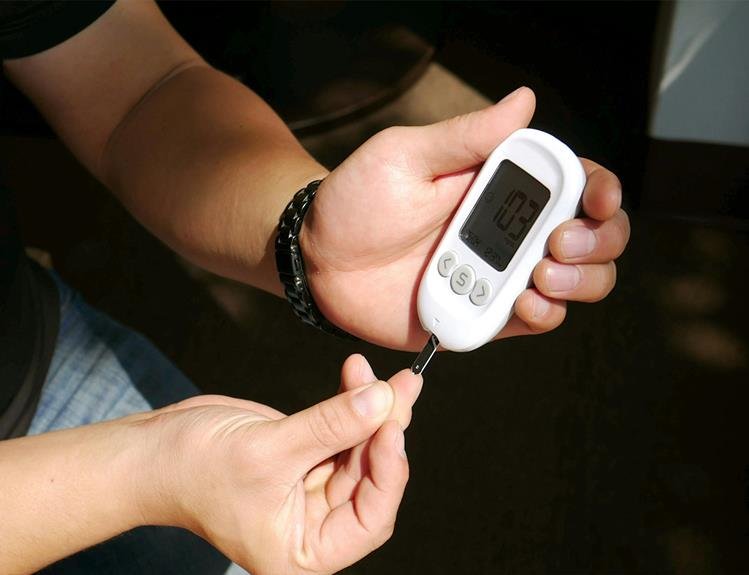Preventing Diabetes-Related Amputations: Steps to Protect Your Feet
Imagine your feet as the foundation of a house; without a solid base, the entire structure is at risk. When it comes to diabetes, your feet play a crucial role in your overall health. Understanding how to care for them is essential in preventing serious complications.
By implementing a few simple steps, you can safeguard your feet and potentially avoid the dire consequences of diabetes-related amputations.
Importance of Foot Care
To prevent diabetes-related amputations, prioritizing foot care is crucial. Managing your foot health plays a significant role in preventing complications that can lead to severe outcomes. Proper foot care involves daily practices that help maintain the health of your feet and reduce the risk of issues like ulcers and infections. By paying attention to your feet, you can catch potential problems early and take action to prevent them from escalating.
Regularly washing your feet with mild soap and warm water is essential to prevent infections. Make sure to dry your feet thoroughly, especially between the toes, as moisture can lead to fungal growth. Additionally, keeping your skin moisturized with lotion can prevent cracking and dryness. Wearing well-fitting shoes and clean socks can also help protect your feet from injuries and irritation.
Daily Foot Inspection
Performing a daily foot inspection is essential for individuals with diabetes to monitor for any signs of potential issues. By checking your feet every day, you can catch any problems early and prevent them from escalating into more serious complications. Start by examining the tops, sides, soles, heels, and between your toes for any cuts, blisters, redness, swelling, or signs of infection. Use a mirror or ask for help if you have trouble seeing all areas of your feet.
During your foot inspection, pay special attention to any changes in sensation, such as numbness or tingling, as these can indicate nerve damage. If you notice any abnormalities or have concerns, contact your healthcare provider immediately. Additionally, make sure to keep your feet clean and moisturized to prevent dry skin and cracking, which can lead to infections.
Proper Footwear Selection
Inspecting your feet daily is crucial, and selecting proper footwear plays a significant role in preventing diabetes-related complications. When choosing shoes, opt for pairs that fit well and provide ample cushioning and support. Shoes that are too tight can cause blisters, calluses, or ulcers, which can be particularly dangerous for individuals with diabetes due to decreased sensation in the feet.
Look for shoes with soft uppers and roomy toe boxes to prevent rubbing and irritation. Avoid high heels, as they can put excessive pressure on certain areas of the foot. Instead, choose shoes with low heels and good arch support to distribute weight evenly and reduce strain on your feet.
Consider consulting with a podiatrist or footwear specialist to ensure you're wearing the right shoes for your foot shape and any specific foot conditions you may have. Remember, proper footwear is a simple yet effective way to protect your feet and lower your risk of diabetes-related foot complications.
Managing Blood Sugar Levels
Keeping your blood sugar levels within a healthy range is essential for managing diabetes effectively. Consistently high blood sugar levels can lead to various complications, including nerve damage and poor circulation, which can increase the risk of foot ulcers and amputations. To manage your blood sugar levels, it's crucial to monitor them regularly using a glucose meter, follow a balanced diet that's low in sugar and carbohydrates, engage in regular physical activity, and take medications as prescribed by your healthcare provider.
Eating a diet rich in fruits, vegetables, whole grains, and lean proteins can help stabilize blood sugar levels. Avoiding sugary drinks and snacks can prevent sudden spikes in blood sugar. Physical activity is also vital in managing diabetes as it helps your body use insulin more efficiently, lowering blood sugar levels. Additionally, taking your prescribed medications on time and as directed by your doctor is crucial for maintaining stable blood sugar levels.
Regular Podiatrist Visits
Regular visits to a podiatrist are essential for maintaining the health of your feet and preventing diabetes-related complications. As a person living with diabetes, your feet require special attention due to the increased risk of nerve damage and poor circulation. A podiatrist is a vital member of your healthcare team who can help monitor your foot health, identify any issues early on, and provide valuable guidance on proper foot care.
During these visits, the podiatrist will conduct thorough examinations to check for any signs of potential problems such as ulcers, calluses, or infections. They can also trim your toenails safely and address any foot pain or discomfort you may be experiencing. Regular podiatrist visits allow for early intervention and treatment of foot issues before they escalate into more serious complications like infections or ulcers that could lead to amputations.
Avoiding Foot Injuries
To avoid foot injuries, make sure to choose proper footwear that fits well and provides adequate support.
Regularly inspect your feet for any signs of redness, swelling, or cuts that could lead to complications.
Proper Footwear Selection
Invest in sturdy, well-fitted shoes to protect your feet from potential injuries. Proper footwear is crucial in preventing foot problems for individuals with diabetes.
Look for shoes that provide ample support and cushioning to reduce the risk of developing blisters, calluses, or ulcers. Opt for models with roomy toe boxes to prevent rubbing and irritation. Avoid high heels and open-toed shoes that can increase pressure on certain areas of the foot.
Choose shoes made of breathable materials to help manage moisture and reduce the risk of infections. Prioritize comfort and functionality over style when selecting footwear to safeguard your feet from harm.
Regular Foot Inspections
Ensure your feet remain healthy by routinely inspecting them for any signs of injury or abnormalities. Examine your feet daily, checking for cuts, blisters, redness, swelling, or any changes in color or temperature. Use a mirror or ask for assistance to inspect the bottom of your feet. Pay close attention to areas between toes and the soles.
If you notice any sores or wounds that are slow to heal, seek medical advice promptly. Avoid walking barefoot and protect your feet from extreme temperatures. Moisturize your feet regularly, but avoid applying lotion between your toes.
Frequently Asked Questions
Can Diabetes-Related Foot Complications Be Reversed With Proper Care?
With proper care, diabetes-related foot complications can be managed effectively. Regular monitoring, foot hygiene, proper footwear, and medical attention are key. Taking steps to prevent issues and seeking timely treatment can go a long way in maintaining foot health.
Are There Any Specific Exercises That Can Help Improve Foot Health for Diabetics?
When managing diabetes, incorporating exercises like walking, swimming, or yoga can boost foot health. These activities improve circulation, strengthen muscles, and enhance balance. Remember, taking small steps now can lead to significant improvements in the long run.
How Often Should Diabetics Get Professional Foot Care Treatments?
You should get professional foot care treatments as recommended by your healthcare provider. Regular visits can help monitor and maintain your foot health, reducing the risk of complications. Stay proactive in scheduling these appointments to protect your feet.
Are There Any Alternative Treatments or Therapies That Can Help Prevent Diabetes-Related Amputations?
When it comes to preventing diabetes-related amputations, consider exploring alternative treatments like specialized therapies or cutting-edge interventions. Embrace a holistic approach to foot care, aiming to safeguard your precious feet and keep them healthy.
What Are Some Warning Signs That Indicate a Diabetic Foot Ulcer May Be Developing?
If you notice persistent redness, swelling, warmth, or drainage on your feet, along with increased pain or odor, it could signal a developing diabetic foot ulcer. Promptly seek medical attention to prevent complications.
Conclusion
So, remember to take care of your feet to prevent diabetes-related amputations. Keep an eye on them daily, wear the right shoes, and control your blood sugar levels.
Make sure to visit your podiatrist regularly and avoid any foot injuries. Your feet are your foundation, so treat them like gold to avoid losing them in the long run.





